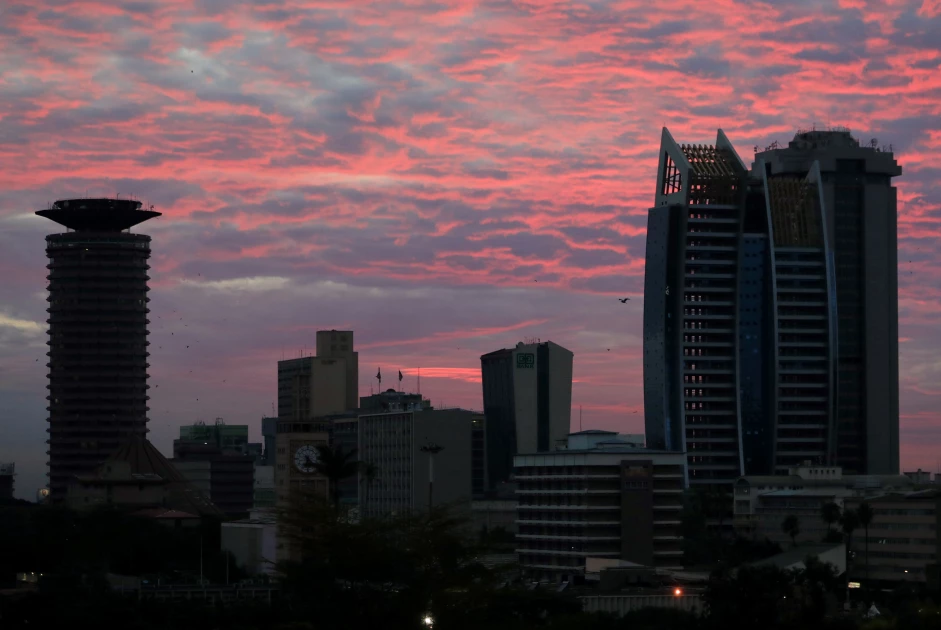Nairobi is Africa's third most polluted city: air quality monitor

A view shows a section of the skyline in Nairobi, Kenya March 28, 2020. REUTERS/File Photo

Audio By Carbonatix
Data from Swiss air quality monitor IQAir on Tuesday placed
Nairobi as Africa’s third-most polluted major city, underlining growing
concerns over urban air quality and its implications for public health and
policy.
Nairobi stands at 83rd in the global ranking with an AQI
(Air Quality Index) reading of 92, well into the ‘moderate’ category and
significantly above the World Health Organization’s 5 µg/m³ annual PM
guideline.
The ranking classifies a 0-50 AQI reading as ‘good’, 51-100
‘moderate’, 101-150 ‘unhealthy for sensitive groups’, and 151-200
‘unhealthy.’ A 201-300 reading is, meanwhile, categorised as ‘very
unhealthy’, while over 301, the air quality is considered ‘hazardous’.
Kinshasa is ranked Africa’s most polluted city (AQI 199),
followed by Cairo and Kampala, while the continent’s top city on the air
quality index is Johannesburg (AQI 62), followed by Dakar and Accra.
Globally, Iraq’s Baghdad has the most polluted air (AQI
256).
Sydney, Australia (AQI 7); Auckland, New Zealand (AQI 11);
Detroit, U.S. (AQI 13); Washington D.C., U.S. (AQI 15); and Canberra, Australia
(AQI 16) have the best quality.
IQAir says the dominant pollutant type in Nairobi is PM2.5;
particulate matter that is 2.5 micrometers or less in diameter.
“In 2020, the average PM2.5 concentration in Nairobi was
14.7 µg/m3, which is about 1.5 times the recommended annual PM2.5 threshold
concentration of the World Health Organization (WHO),” says the report.
Although Nairobi’s air quality is ‘moderate,’ health experts
warn that continued exposure to dirty air is fuelling a surge in respiratory
illnesses such as asthma, while also heightening the risk of heart disease,
lung and throat cancer, miscarriages, and birth defects.
Fine particulate matter is particularly dangerous, as it can
enter the bloodstream and damage vital organs, including the liver, kidneys,
and reproductive system, the report warns.
It cites the large number of vehicles in Nairobi, many of
which are older and produce far more pollution than their newer counterparts
would, factory emissions, construction sites, road repairs, and open burning
among the main drivers of air pollution.
Particulate pollution hotspots in the capital have been
recorded near Dandora Phase 4 (AQI 112) and Kariobangi North Health Center (AQI
90).



Leave a Comment